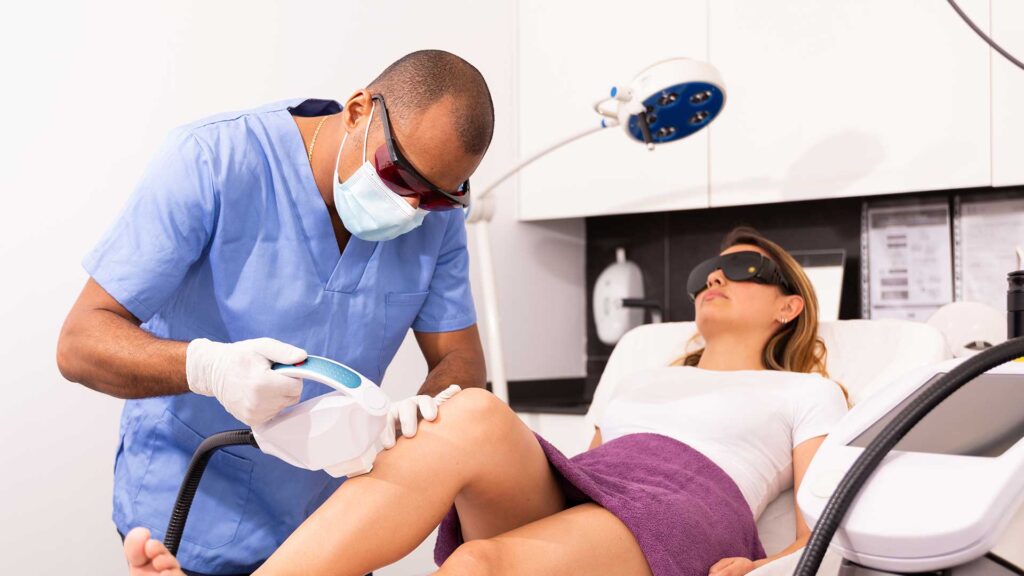
Aesthetic Medicine: Then Vs. Now
Throughout the history of mankind, men and women alike have been intent on improving their physical appearance. Over the last few decades there has been a sort of cosmetic evolution. Gone are the days when improving one’s aesthetic appearance required extensive (and expensive!) plastic surgery. Here to stay is what is known as Aesthetic medicine.
Aesthetic medicine is term that originated in Europe. The idea with aesthetic medicine is that beauty can be achieved there a simple, non-invasive, skincare techniques and treatments. Today, medical aesthetics, as it is commonly known, has advanced extensively. Nearly every city in America has an aesthetic medicine clinic offering treatments such as laser treatments, fillers, injectables, spa treatments, and minimally invasive cosmetic procedures.
The Evolution of Aesthetic Medicine
Over the last 30 years or so the evolution of medical aesthetics has been quite expansive. In decades past if a patients wanted to alter or improve their physical appearance, they had to seek out plastic surgery options. As you know, plastic surgery is expensive, requires hospitalization, and extended recovery time; thus reserving plastic cosmetic surgery typically for the elite of society.
Today, thanks to advances in medical aesthetics, patients can improve and change their look without having to go under the knife. The possibilities and procedures are nearly limitless, and treat a variety of issues including acne, wrinkles, excess hair, and even cellulite. Today, aesthetic medicine is a booming business that is catering to a more informed, self-assured and willing consumer that knows there are non-invasive procedures that can greatly improve their look. Patients have the luxury of choosing from over 20 types of minimally invasive treatments.
5 Most Popular Types of Aesthetic Medicine Treatments
A Photofacial is an advanced skin rejuvenation technique that uses lasers, lights or photodynamic therapy to treat skin conditions such as aging, wrinkles, spots, and surface texture issues such as acne, as well as skin conditions caused by sun damage. During a photofacial procedure, gentle pulses of intense, optimized lights are directed at the skin and are selectively absorbed by the treated area. The of the light delivered destroys the damaged blood vessles and pigments, thus effectively working to reduce wrinkles, sunspots, scarring and stretchmarks.
Dermal Fillers
Dermal fillers are used to smooth, and nearly eliminate, the appearance of wrinkles. Dermal fillers are injected directly into the skin. These fillers consist of hyaluronic acids, collagen, or biosynthetic polymers which helps increase volume in the skin, which in turn has a smoothing effect on wrinkles. Patients can expect results after a couple rounds of treatment, and the results last for months at a time.
Chemical Peels
Chemical peels are one of the most popular aesthetic medicine treatments available. Chemical peels improve and smooth the texture of the skin by using a chemical solution that removes dead skin cells. The resulting healthy skin that is revealed produces a rejuvenated look. The regenerated skin is smoother and less wrinkled than the old skin. Chemical peels are a great treatment option for patients who are looking to repair sun-damaged skin.
Body Contouring and Cellulite Treatment
One of the most in-demand aesthetic medicine treatments is body contouring and cellulite treatment. Medical aestheticians use a treatment called endermologie that knead the skin with a rolling suction device, which in turn boosts circulation to the are and stimulates collagen production. Patients can expect to see results after six sessions. Other tools used to perform this treatment include lasers and radio-frequency devices which also use massage and suction techniques. Body contouring treatments are painless and help shrink fat cells via heat
Laser Hair Removal
Laser hair removal is a popular aesthetic medicine treatment sought after by both men and women. As the name implies, laser hair removal uses a special laser tool to target areas of unwanted or excess hair. Areas most commonly targeted are legs, chest, back, bikini line, and underarm. Laser hair removal works by having the laser target the hair follicle, and kills it without damaging the surrounding area. While laser hair removal isn’t a permanent solution, it does have long last results in as little as three treatment sessions.
How to Offer Aesthetic Medicine Treatment?
Medical aesthetics is a field which requires advanced medical aesthetic training. Throughout the country one can find a medical aesthetic academy that offers medical aesthetic training programs. These programs range from laser treatment training, to skincare treatment training, to medical aesthetic programs for nurses and healthcare professionals. To find one of these training academies, simply search in Google “medical aesthetic training courses near me.”